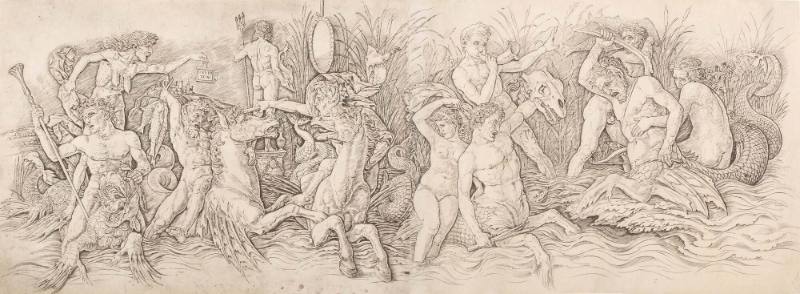



Object Details
Artist
Andrea Mantegna
Date
ca. 1485–88
Medium
Engraving and drypoint on laid paper
Dimensions
Image/Sheet: 11 7/8 × 15 3/4 inches (30.2 × 40 cm)
Credit Line
Gift of Paul Ehrenfest, Class of 1932, and Elizabeth K. Ehrenfest
Object
Number
73.019.001-.002
Andrea Mantegna’s monumental print borrows heavily from classical sculpture to compose its male an(…)
Andrea Mantegna’s monumental print borrows heavily from classical sculpture to compose its male and female nude figures. Mantegna exercised his knowledge of antique art to combine visual references from sarcophagus friezes, heroic Apollos, and bathing Venus sculptures into the dynamic composition seen here, which in turn translated the antique corporeal ideal into a fifteenth-century visual context. Mantegna’s masterpiece helped to promulgate the idea of Greco-Roman corporeal beauty and perfection, which ironically was derived from nonliving models. Artists reevaluated Mantegna’s sculptural approach (both literally and figuratively) as the practice of life drawing rose in popularity. (“Undressed: The Nude in Context, 1500-1750,” text by Brittany R. R. Rubin and presented at the Johnson Museum February 9-June 16, 2019)












